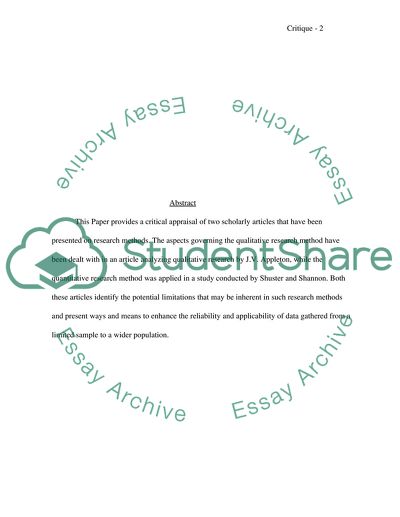Cite this document
(“Critical Appraisal Of Qualitative and Quantitative Research Articles Essay”, n.d.)
Critical Appraisal Of Qualitative and Quantitative Research Articles Essay. Retrieved from https://studentshare.org/medical-science/1702828-critical-appraisals
Critical Appraisal Of Qualitative and Quantitative Research Articles Essay. Retrieved from https://studentshare.org/medical-science/1702828-critical-appraisals
(Critical Appraisal Of Qualitative and Quantitative Research Articles Essay)
Critical Appraisal Of Qualitative and Quantitative Research Articles Essay. https://studentshare.org/medical-science/1702828-critical-appraisals.
Critical Appraisal Of Qualitative and Quantitative Research Articles Essay. https://studentshare.org/medical-science/1702828-critical-appraisals.
“Critical Appraisal Of Qualitative and Quantitative Research Articles Essay”, n.d. https://studentshare.org/medical-science/1702828-critical-appraisals.


